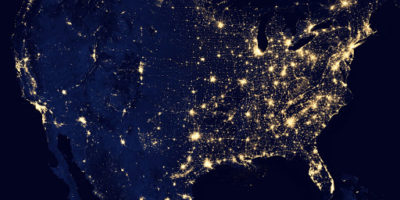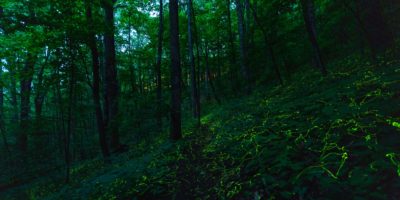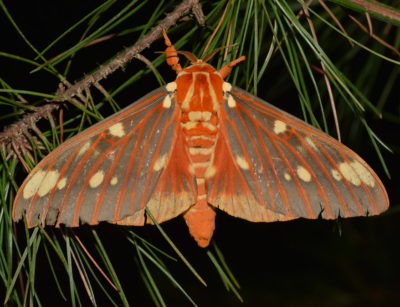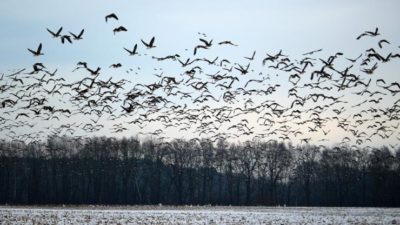Lights Out for Local Wildlife
How darkness benefits our native wildlife

When you look at earth from a satellite perspective at night, it is never dark. Buildings and homes light up the sky and create an artificial environment that disrupts nocturnal wildlife.
Light pollution is an often overlooked effect of our modern ways, and one that causes a negative impact on native wildlife. Artificial light causes behavioral changes in nocturnal creatures, such as fireflies, moths, bats, and more. And these behavioral changes can be harmful—and even fatal—to many valuable members of our ecosystems.
Fireflies
These beloved creatures create a spectacle that fascinates many. But a recent study by entomologists at Tufts University found that fireflies are on the long list of nocturnal creatures that suffer from light pollution. Specifically, light disrupts their essential ability to reproduce. These scientists found that, “…all colors of artificial light significantly suppressed the courtship flashes of the firefly pairs.” If you want these unique creatures to stick around for generations to come, reducing light pollution is the best way to ensure their livelihood.
See this podcast to learn more about fireflies and light pollution.

Bats
Light pollution causes many negative impacts on these well-known nocturnal animals. One of the most significant is on their feeding behaviors. Lights can delay the start of their feeding times significantly, causing starvation and in some cases even fatality. This can also negatively impact the growth and survival rates of their young. Less light pollution means more of these pest-controlling, pollinating heroes.
Learn more about threats to bats at Bat.org.
Moths

Scientists have found that the attraction moths have to light causes them to lose their regular functionality. They wear themselves out flying around the lights, sacrificing energy they need to survive and perform their duties as nighttime pollinators. Although bees and butterflies tend to take credit as major pollinators, recent research, such as from University College London, has shown that moths are major players in many pollination networks. Without these important creatures, many plants reliant on their pollination duties would suffer.
For more tips on how to help moths and butterflies, check out our gardening for butterflies guide.
Migratory Birds
Migratory birds, although not typically nocturnal, can be disoriented by light pollution when flying at night. This contributes to the hundreds of millions of birds estimated to die in building collisions in the United States every year. Reducing light pollution can reduce the needless losses of these essential creatures.
See this article from BirdCast to learn more about the hazards of light pollution for migratory birds.

What can you do?
The most effective solution to this problem is simple—turn your lights off at night.
If you have necessary lights, however, consider a more conscious alternative. Timers, dimmers, or motion-sensors are all options that could reduce your light pollution footprint. Tom Fanslow, Conserving Carolina’s Land Protection Director, also notes that, “replacing essential but light-wasting fixtures with ground-focused fixtures is part of the solution.” For more on sustainable light fixtures, check out these tips from the International Dark Sky Association.
Another solution is having native plants in your yard as a natural light barrier. In a podcast about fireflies, entomologist Dr. Sara Lewis cites that, “Plants create a barrier… that blocks the amount of light that’s coming into [a habitat].” This creates a darker environment for the wildlife beyond your home. Planting native shrubs or trees is an effective way to make this natural barrier. And this not only benefits nocturnal wildlife, but also the ecosystem as a whole.
To see the latest on the fight against light pollution and ways you can help, head to the International Dark Sky Association for more.
Interested in improving habitat where you live? We offer seasonal tips on how to make your yard and home a better habitat for native plants, animals, and insects. Explore more Habitat at Home topics here. You can also sign up for Conserving Carolina emails to get the latest Habitat at Home columns in your inbox.
Author Allison Houtz is serving as an AmeriCorps Project Conserve Communications and Education Associate with Conserving Carolina.